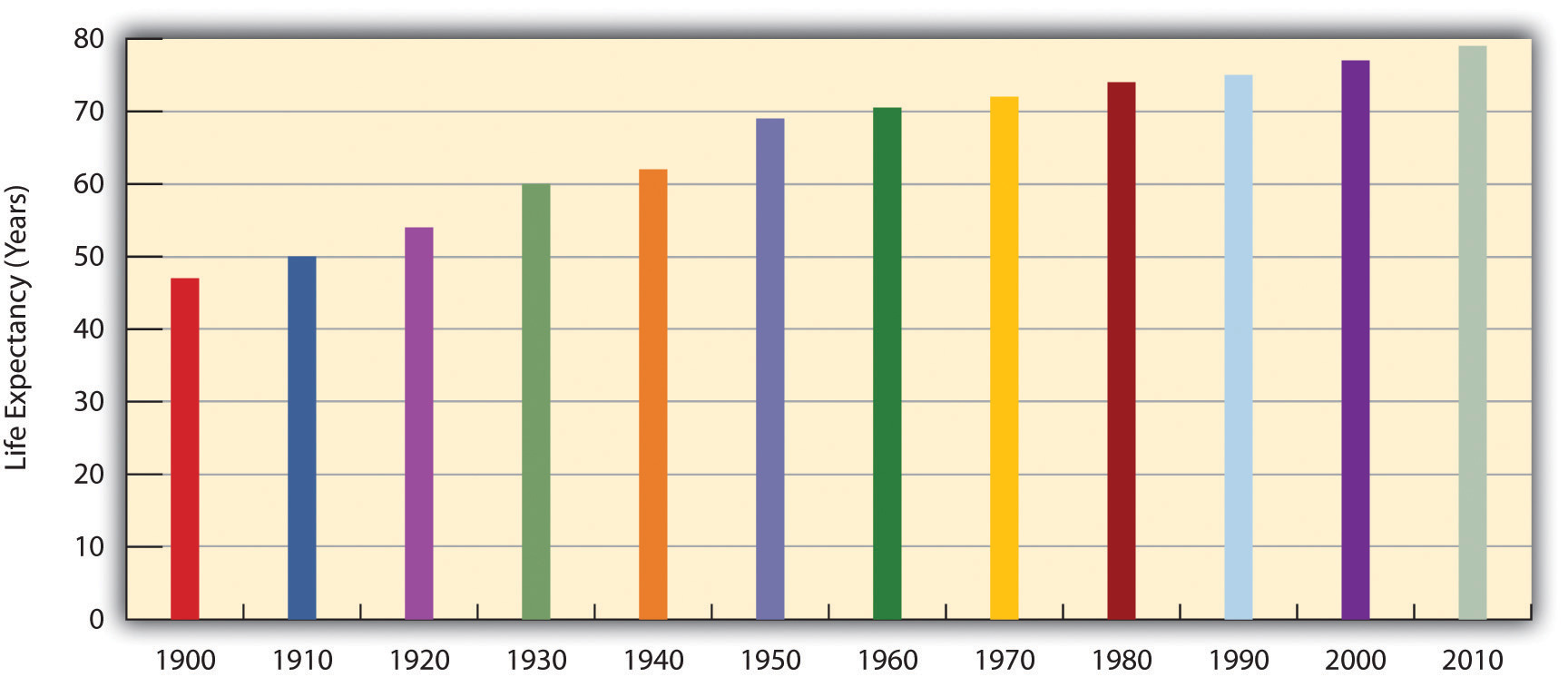
How far has life expectancy in the U.S. dropped? Shocking stats tell all
According to new data from National Center for Health Statistics (NCHS), a part of the CDC, one year of your life expectancy has been sucked away. Over 2020, the average life expectancy declined by a year thanks to COVID-19 and a spike in drug overdoses.
Although COVID-19 deaths can be seen as an anomaly, life expectancy in the U.S. has reportedly been on a downturn for the last few years. Therefore, we have to wonder whether life expectancy in the U.S. will continue to decline, or will it begin to rise again? Let’s take a closer look at these new stats.

Past life expectancy
Human life expectancy has been on the upswing over the last century. Thanks to reduced infant mortality, improved sanitation, the reduced number of deadly diseases, and widespread vaccine use – life expectancy in the U.S. soared from around forty-seven in 1900 to nearly seventy-nine in 2014, the year life expectancy in the U.S. was at its peak.
Last year, although life expectancy in the U.S. was dropping from other causes, COVID-19 pushed life expectancy lower by reported causing over 500,000 deaths from March 2020 through February 2021.
In the CDC’s table from 2018, over 600,000 deaths were from heart disease followed by cancer, just shy of the 600,000 mark itself. If these numbers were similar in 2020, it would make COVID-19 the third-leading cause of death for people in the U.S. last year.

“Excess deaths”
According to the CDC, “excess deaths are typically defined as the difference between observed numbers of deaths and expected numbers”. Therefore, if a global pandemic comes to town and kills half a million people in the U.S., deaths resulting from said pandemic are considered excess deaths.
Therefore, when calculating life expectancy in the U.S., the NCHS considered all causes of death, including excess deaths from COVID-19, in its report. The CDC further explained:



“As some deaths due to COVID-19 may be assigned to other causes of deaths (for example, if COVID-19 was not diagnosed or not mentioned on the death certificate), tracking all-cause mortality can provide information about whether an excess number of deaths is observed, even when COVID-19 mortality may be undercounted.”
When the CDC says “other causes of death”, they mean people who may have contracted COVID-19 but had other co-morbid diseases or symptoms that may have led to their death. The most frequent co-morbid symptom with COVID-19 was pneumonia and other respiratory illnesses, followed by hypertension & diabetes.
Deaths from COVID-19 and a surge in drug overdoses cut U.S. life expectancy by a year in early 2020.
Black men and women and Hispanic men saw the worst declines, all losing more than 2 years of life expectancy. https://t.co/jz0gYnEWqH
— NPR (@NPR) February 18, 2021
Other factors & demographics
In the last few years, drug overdoses were a culprit for pushing life expectancy in the U.S. lower. In an email to NPR, NCHC spokesperson Jeff Lancashire explained:
“If you’ll recall, in recent pre-pandemic years there were slight drops in life expectancy due in part to the rise in overdose deaths. So they are likely contributing here as well but we don’t know to what degree. COVID-19 is responsible for an estimated 2/3 of all excess deaths in 2020, and excess deaths are driving the decline.”
Also, life expectancy in the U.S. can vary widely by race & gender, and that includes the new, reported life expectancy drop. Life expectancy for a white man in the U.S. dropped by 0.8 years while life expectancy for a non-Hispanic black man dropped by over three years. For women, life expectancy dropped by 0.7 years for white women, 1.1 years for Hispanic women, and over two years for non-Hispanic black women.


Different data
According to the United Nations, life expectancy in the U.S. actually went up by .08 in 2020, and per their data, it’s been on the upswing since 2018. Around the world, the United Nations predicted that life expectancy would be over eighty-nine by the year 2100.
However, in a big red box on top of the page, the UN emphatically noted: “All 2020 and later data are UN projections and DO NOT include any impacts of the COVID-19 virus.” Meaning, they didn’t factor COVID into their life expectancy report.
—
Do you think life expectancy in the U.S. will rise or fall? Let us know in the comments!







